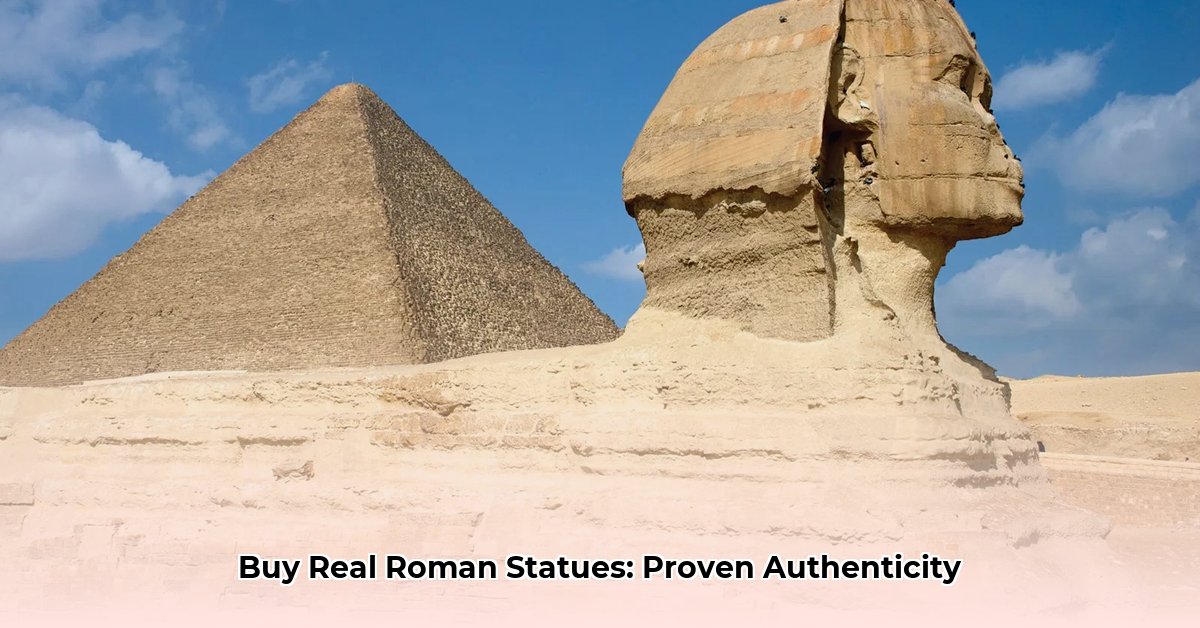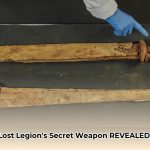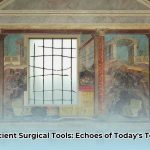The profound allure of **ancient Roman statues for sale** resonates with history enthusiasts and art collectors worldwide. Owning a tangible fragment of a civilization that laid the foundations for much of Western society offers an unparalleled connection to the past. Considering the history, it is wise to [research artifacts](https://www.lolaapp.com/ancient-roman-artifacts/). Yet, navigating the intricate market for these exquisite **ancient Roman artifacts** demands not only a discerning eye but also a deep understanding of provenance, authenticity, and ethical acquisition. This authoritative guide details the essential steps for acquiring a genuine Roman statue, ensuring your collection is both historically significant and responsibly curated.
## Decoding the Ancient Roman Art Market: Value, Variety, and Risks
The global market for **ancient Roman art** is dynamic, with an increasing presence across various platforms, from venerable auction houses to specialized online galleries. The value of an **authentic Roman statue** is a complex interplay of its material (be it the classical elegance of marble, the robust durability of bronze, the rustic charm of terracotta, or even intricate stone and wood), its condition, artistic merit, and above all, its verifiable **provenance**—the documented history of its ownership.
Prices for **Roman antiquities** can span an immense spectrum, ranging from a few hundred dollars for smaller, fragmented pieces, such as a pottery oil lamp or a mosaic glass fragment, to hundreds of thousands or even millions for pristine, museum-quality works. For instance, **ancient Roman marble statues** can vary from roughly $180 for a modest fragment to over $220,000 for a monumental or historically significant piece, with many full figures averaging around $3,000. Understanding these intricate market dynamics is your crucial first step in responsible collecting.
### Essential Safeguards for the Aspiring Collector:
* **Provenance is Non-Negotiable:** A comprehensive chain of custody is the bedrock of legality, ethical acquisition, and ultimately, enhanced value. It validates the item's journey from discovery.
* **Rigorous Authentication is Imperative:** The market is, unfortunately, fertile ground for sophisticated forgeries. Expert analysis is indispensable to confidently distinguish genuine antiquities from elaborate fakes.
* **Reputable Dealers Are Your Foundation:** Partnering with established, transparent, and ethically committed dealers significantly mitigates risks, fosters trust, and provides invaluable expertise.
Every acquisition should serve as an act of preservation, safeguarding cultural heritage rather than inadvertently contributing to illicit trade.
## Step 1: Charting Your Collection's Course and Financial Parameters
Before embarking on your quest for **Roman statues for sale**, a period of thoughtful introspection is essential. What specific aspects of Roman artistry and history captivate you most?
* **Material Preference:** Do you envision the luminous grandeur of **marble statues**, the enduring power of **bronze sculptures**, or perhaps the more humble, yet historically rich, **terracotta figures** or stone reliefs?
* **Subject Matter Intrigue:** Are you drawn to the commanding presence of imperial portrait busts, the ethereal beauty of mythological deities like Venus, the practical artistry of everyday objects, or the poignant narratives of funerary art? Consider works inspired by classical masters like Canova or Thorvaldsen, which embody Roman artistic ideals.
* **Collection Purpose:** Is your primary motivation investment potential, the aesthetic enhancement of your living space, or a deep academic engagement with historical significance?
Crucially, establish a realistic budget. The expansive market for **Roman antiquities** offers pieces across all price points, from smaller, accessible items like bronze oil lamp lids to monumental sculptural works. A clearly defined budget will sharpen your focus, preventing impulsive decisions and ensuring financial prudence.
## Step 2: Identifying Trusted Dealers and Acquisition Channels
Securing a trustworthy source is the cornerstone of ethical and successful collecting in the specialized world of **Roman antiquities**. This step demands meticulous due diligence. Prioritize dealers who unequivocally demonstrate:
* **Professional Accreditation:** Are they active members of recognized professional organizations such such as the Antiquities Dealers Association (ADA) or the International Association of Dealers in Ancient Art (IADAA)? Membership often signifies adherence to stringent ethical codes, best practices, and a commitment to combating illicit trade.
* **Unwavering Transparency in Sourcing:** A reputable dealer will readily provide explicit details regarding the statue's acquisition, including its complete chain of ownership. They should be able to articulate *how* the piece entered their possession.
* **Profound Expertise:** Seek out specialists with deep academic knowledge of **Ancient Roman art**, mastery of authentication techniques, and a comprehensive understanding of international cultural heritage laws. Their guidance is invaluable.
While major international auction houses (e.g., Sotheby's, Christie's) and specialized online marketplaces offer vast selections, exercise heightened vigilance. Always conduct thorough research into the seller's reputation and compare offerings across multiple trusted sources. A reliable dealer will eagerly provide comprehensive condition reports and high-resolution imagery, welcoming your scrutiny.
## Step 3: Mastering Authentication: Discerning Genuine Artifacts from Sophisticated Fakes
The unfortunate reality within the market for **ancient Roman statues** is the pervasive presence of sophisticated forgeries. Distinguishing a genuine artifact from an elaborate fake requires not only a trained eye but, more often than not, the indispensable assistance of professional experts.
Key indicators of authenticity often include:
* **Patina Characteristics:** Genuine ancient bronze or marble develops a complex, uneven, and natural patina over centuries, reflecting environmental interactions. This organic aging differs significantly from uniform or artificially induced aging techniques used in modern forgeries. Look for natural accretion and mineral deposits.
* **Tool Marks and Craftsmanship:** Examine the carving or casting marks meticulously. Authentic pieces bear the distinct, often irregular marks consistent with ancient tools and techniques (e.g., hand chisels, drills). Modern forgeries frequently betray the uniform precision or tell-tale signs of power tools.
* **Material Composition Analysis:** Advanced scientific techniques, such as **X-ray fluorescence (XRF) spectroscopy**, can confirm if the elemental composition of materials (e.g., bronze alloys, marble types) aligns with ancient Roman practices. For pottery or terracotta figures, **thermoluminescence (TL) dating** offers a reliable method to determine the last firing date, directly indicating age. While less common for stone, organic inclusions in ancient repairs or restoration materials can sometimes be subjected to **carbon-14 dating**.
* **Red Flags:** Be wary of pieces that appear "too perfect," possess unusually bright or uniform colors, or have a consistently smooth surface lacking natural wear. Inconsistencies in style, iconography, or anachronistic details can also signal a forgery.
Investing in professional authentication—from a conservator, art historian, or forensic archaeologist specializing in antiquities—is a crucial safeguard. This seemingly added cost is a vital insurance against significant financial loss and ensures you acquire a true piece of history. Studies indicate that buyers who seek professional authentication report significantly higher satisfaction with their purchases and greater confidence in their collection's integrity.
## Step 4: The Imperative of Provenance Research: Tracing an Object's Journey
**Provenance**, the thoroughly documented history of an artifact's ownership and location from its discovery to the present, stands as the single most critical factor for any **ancient Roman statue**. Its importance transcends mere value; it is fundamentally about legality, ethics, and the preservation of cultural heritage.
A robust provenance helps to:
* **Establish Legality and Compliance:** It confirms that the statue was not illegally excavated, looted, or unlawfully exported from its country of origin, adhering to international and national laws.
* **Ensure Ethical Acquisition:** It prevents you from inadvertently supporting the illicit trade in antiquities, a clandestine activity that frequently funds criminal enterprises and devastatingly destroys irreplaceable archaeological sites and cultural contexts.
* **Magnify Market Value:** Statues boasting impeccable, independently verifiable provenance command significantly higher prices and are far more desirable within the legitimate art market.
Resources for comprehensive provenance research include specialized archaeological databases, historical art market records, past auction catalogs, museum deaccession lists, and dedicated provenance research firms. When a statue's origins can be traced back to before 1970 (the year of the UNESCO Convention on the Means of Prohibiting and Preventing the Illicit Import, Export and Transfer of Ownership of Cultural Property), its legality and ethical standing are significantly strengthened.
## Step 5: Strategic Price Negotiation
Negotiating the purchase price of **ancient Roman statues for sale** requires informed confidence. Conduct thorough research into recent sales of comparable artifacts, meticulously considering:
* **Overall Condition:** Assess any repairs, restorations, and existing damage. Significant flaws or extensive restoration will naturally impact the market price.
* **Rarity and Significance:** Is it a common type of object, or a unique, seldom-seen example of artistic or historical importance? Rarer pieces, particularly those from well-documented archaeological contexts or those depicting famous figures, command substantial premiums.
* **Strength of Provenance:** As previously emphasized, robust provenance unequivocally justifies a higher price point.
Approach negotiations with a fair offer derived from your diligent research. Be prepared to confidently walk away if the price appears exorbitant or if the documentation presented is insufficient or questionable. Informed buyers consistently achieve more favorable outcomes and make more secure acquisitions.
## Step 6: Navigating Ethical and Legal Complexities
The acquisition of **Roman antiquities** inherently carries substantial ethical and legal responsibilities. It is absolutely paramount to unequivocally avoid any artifact that lacks clear, verifiable provenance or that originates from countries known for chronic illicit trafficking (e.g., certain regions of Italy, Greece, Turkey, Syria, Iraq, Egypt, where cultural heritage is particularly vulnerable).
Familiarize yourself thoroughly with key international cultural heritage laws, most notably the **UNESCO 1970 Convention** and the **UNIDROIT Convention on Stolen or Illegally Exported Cultural Objects (1995)**, as well as your own country's specific import and ownership regulations. By actively supporting the legal and transparent market for antiquities, you become a guardian of cultural heritage, contributing directly to its responsible preservation for future generations rather than its exploitation.
## Step 7: The Stewardship of Your Roman Statue
Once you have responsibly and ethically acquired your **authentic Roman statue**, diligent and proper care is essential to preserve its condition, integrity, and long-term value.
* **Cleaning and Maintenance:** Employ only soft, lint-free brushes for regular dusting. Absolutely avoid harsh chemical cleaners, abrasive materials, or excessive moisture, all of which can cause irreparable damage to ancient surfaces, patinas, and delicate details. Consult a professional conservator for any deeper cleaning or restoration needs.
* **Optimal Storage and Display:** Protect your statue from environmental extremes. Direct sunlight can cause thermal stress, leading to cracking or material degradation, especially in marble. Maintain stable temperature and humidity levels within your display environment to prevent material expansion, contraction, and the formation of destructive efflorescence or "bronze disease" on metal artifacts. Secure the display to prevent accidental falls or damage.
Owning an **ancient Roman statue** is a profound privilege, elevating you to the role of a devoted caretaker of history. By meticulously following these comprehensive steps, you can confidently navigate the complex market, acquire a beautiful and indisputably authentic piece of the past, and contribute meaningfully to the responsible preservation of our shared human heritage. May your journey into collecting be both enriching and enduring.










